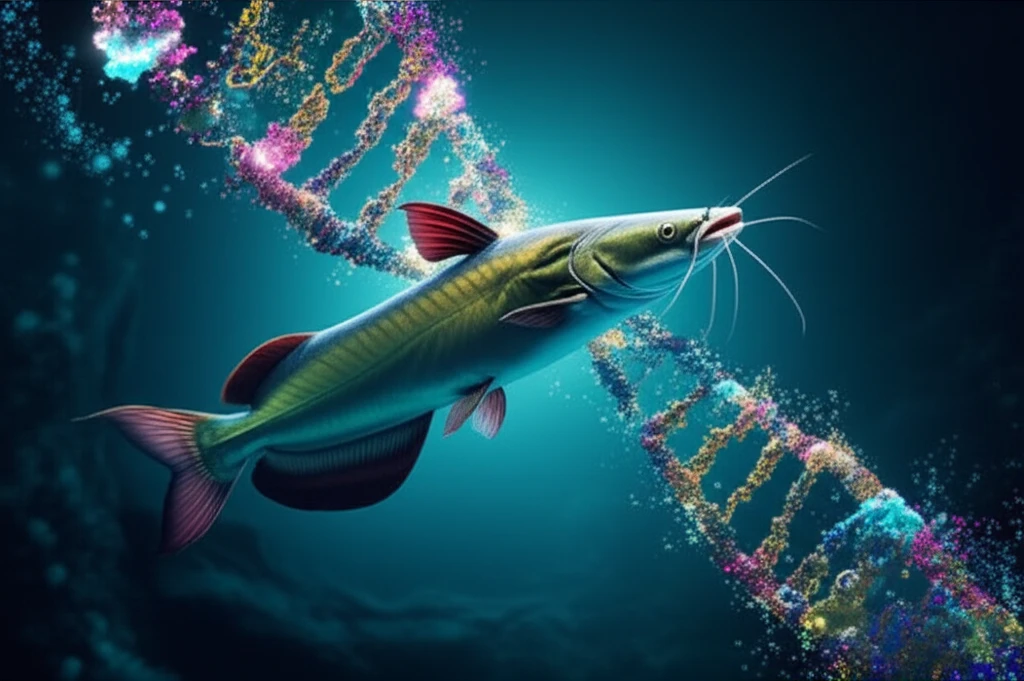
Unlocking the Secrets of Mekong Catfish: How DNA Barcoding is Revolutionizing Species Identification
"Dive into the fascinating world of catfish in the Mekong Basin and discover how cutting-edge DNA technology is changing the way we understand and protect these vital species."
The Mekong River Delta, a vibrant and fertile region, teems with diverse aquatic life, particularly a wide array of fish species. Among these, the Pangasiidae family, commonly known as catfish, holds significant economic and cultural value in Vietnam. Prized for their potential in aquaculture and as a staple food, species like the sutchi catfish (Pangasianodon hypophthalmus) and basa catfish (Pangasius bocourti) are key players in the region's economy. In 2016 alone, the production of Pangasianodon hypophthalmus reached a staggering 1.2 million tons, generating an export income of US$ 1.67 billion across 136 countries [2].
However, accurately identifying different catfish species has long been a challenge. Traditional methods relying on external morphological characteristics often fall short due to the striking similarities among species, leading to confusion and potential misidentification. This is where the innovative approach of DNA barcoding steps in, offering a precise and reliable tool for distinguishing between species.
A recent study published in the Journal of Molecular Biomarkers & Diagnosis sheds light on how DNA barcoding is revolutionizing catfish identification in the Mekong Basin [1]. By analyzing specific gene sequences, researchers have successfully differentiated nine catfish species, paving the way for better conservation and sustainable aquaculture practices. Let's dive into the details of this groundbreaking research and explore its implications for the future.
Why Traditional Identification Methods Fall Short

For years, scientists and fish farmers have struggled with accurately identifying catfish species based solely on their physical appearance. Many species within the Pangasiidae family share similar features, making it difficult to tell them apart. This can lead to a host of problems, including:
- Misidentification of species: Inaccurate identification can hinder effective conservation efforts and lead to mismanagement of fish stocks.
- Inconsistent data: Relying on morphology alone can produce conflicting classifications, as environmental factors and processing methods can alter a fish's appearance.
- Limited accuracy: Morphological classifications are often subjective and prone to human error, especially when dealing with processed products where key features may be damaged or missing.
The Future of Catfish Identification
DNA barcoding represents a significant leap forward in our ability to accurately identify and differentiate catfish species. As the technology becomes more widely adopted, it promises to enhance conservation efforts, improve aquaculture practices, and ensure the sustainable management of these valuable resources in the Mekong Basin and beyond. The results obtained in this study also show that beside COI gene, the cyt b gene region can be successfully used for differentiating between species and accepted as a standard region for DNA barcoding.
